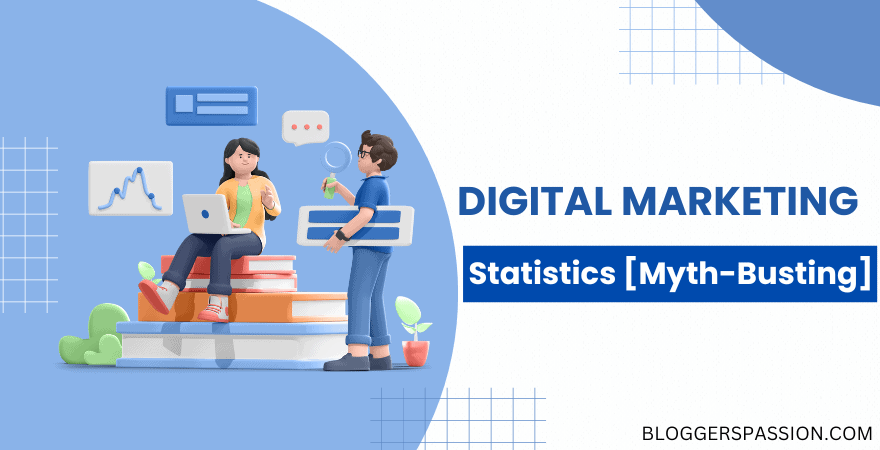Webinars are still a HUGE deal; they are essential because they are cost-effective and help promote your products or businesses.
Webinars are the second most popular way for 51% of B2B marketers to connect with customers. On a weekly basis, 54% of B2B professionals attend a webinar.
Isn’t it interesting? For more details, let’s dive into our exclusive list of research-backed webinar statistics:
Table of Contents
Key Webinar Statistics In 2025
- Webinar Software Market is projected to grow from $9.91 billion in 2025 to $29.39 billion by 2034.
- Software & Technology has the most webinar market share, with 29%.
- The average webinar conversion rate is 56%.
- The average viewing time of webinars is around 55 minutes.
- 76% of webinar registrations come from emails.
- The best days to promote a webinar are Wednesday, Thursday and Tuesday.
- 81% of webinars integrate Q&A sessions to improve their audience engagement rates.
- Webinars generally cost between $100 – $3,000.
- Marketers leveraging AI can save up to 10 hours per webinar.
- 76% of marketers conduct webinars to reach more leads.
Webinar Market Growth
The webinar market is growing at a rapid rate. Here are some of the latest webinar market growth stats.
Current Webinar Market Size and Forecasts
The webinar software market was valued at $9.91 billion in 2025. By 2034, the market is expected to reach an impressive $29.39 billion, with a compound annual growth rate (CAGR) of 12.68% from 2025 to 2034. (Source)

This significant growth indicates a GROWING market for webinar software that opens the doors for online seminars and presentations.
What factors are driving webinar growth?
According to Frost and Sullivan, several key factors are driving the growth of the webinar software market, including:
- Advanced data reporting (including in-depth analytics on attendee engagement, demographics, and interests)
- Accessibility
- Reach
- Ease of use
- No travel (as webinars eliminate the need for travel)
- Sustainability
Webinar Adoption By Industries

Here’s the share of webinars hosted by different industries;
| Industry | Share of Webinars |
|---|---|
| Software and Technology | 29% |
| Financial Services | 14% |
| Education | 11% |
| Consulting | 10% |
| Government | 7% |
| Healthcare | 7% |
| Hospitality, Tourism, Travel | 3% |
| Non-Profit | 1% |
Over half of all webinars focus on software and technology, financial services, or education. Nearly 30% of all webinars are produced by businesses in the software and technology sector. Source: Go to Webinar
Webinar Conversion Rates
The number of webinar attendees that turn into registrants and customers is important. Here are some interesting stats on webinar conversion rates.
The average webinar conversion rate is 56%. (Source: ON24)

| Industry | Average conversion rate |
|---|---|
| Financial services | 61% |
| Pharmaceutical sector | 61% |
| Consulting services | 50% |
| Marketing webinars | 44% |
| Corporate webinars | 65% |
| Training | 45% |
| Education | 31% |
| Leisure/Hobby | 15% |
What is the average viewing time of webinars?
55 minutes is the average attendee viewing time of a webinar. Webinars with a duration of 60 minutes tend to attract the highest number of registrants.
Webinar Registration Rate
Webinar registration rate tells you how many people turn into webinar attendees after visiting your webinar registration page. Here are some fascinating webinar registration stats for you.
Understanding Registration Rates
The attendance rate significantly drops as the number of registrants increases. Webinars with 100 to 199 registrants see an average attendance rate of 51%; that number drops significantly to 18% for webinars attracting 200 to 299 registrants.
29% of all webinars are produced by software and technology companies. Marketing webinars have an average attendance rate of 44%.
Industry Benchmarks
Promoting at least four weeks before the live webinar results in an average of 12% more registrations.
According to GoToWebinar’s Big Book of Webinars, nearly 60% of webinar registrations occur within the last week before the event. This means that people often wait until the last minute to register.
Email can account for 76% of webinar registrations while 60% of webinar registration comes from social media networks.
Did you know? Quora advertisers are 60% B2B companies, Check out the complete Latest Quora Statistics.
Sources: Go To Webinar Benchmark Report, ON24, GoToWebinar.
Webinar Attendance Rates
Webinar attendance rates vary widely by industry. Here are some interesting stats on webinar attendance rates.
Generally, webinars see attendance rates between 30% and 50% of registrants. This means if you sign up 100 people, 30-50 might attend live.
Webinar attendance rates vary.
| Industry | Webinar attendance rate |
| Corporate communications | 65% (high engagement) |
| Training | 53% (depends on relevance, mandatory vs optional) |
| Sales/Customer Service | 70-72% (focuses on improving skills) |
Source: Go To Webinar
Best days to promote a webinar
According to Livestorm, weekdays are prime time for webinar registrations, with Wednesdays leading the pack.
In fact, Wednesdays and Thursdays capture a significant registrations.

What is the average registration-to-view conversion for webinars?
Here’s a breakdown of the average registration-to-view conversion rate for webinars.
| Average registration to view | Conversion rate |
|---|---|
| Total Conversion Rate | 46% of registrants watch the webinar (live or on-demand) |
| Live Conversion Rate | 34% of registrants attend the live webinar |
| On-Demand Conversion Rate | 13% of registrants watch the webinar on-demand |

Best times for webinar attendance
Webinars at 2PM have the highest average attendance rates (50%). Webinars held at 2 PM experience the highest live attendance rates, with 12 PM (46%) and 11 AM (45.6%) following closely. (Source: GetContrast)

Factors Affecting Attendance Rates
The following factors have the most significant impact on overall registration and attendance, according to BrightTALK;
- Content topic
- Presenter or speaker lineup
- Virtual event user experience
- The credibility of the hosting company
- Post-event supplemental content
- Networking and interaction with speakers
- Swag/giveaway offers
Webinar Engagement Statistics
Webinar engagement refers to how actively attendees interact with the webinar content. Here are some interesting stats on webinar engagement.
Engagement During Webinars
- A whopping 81% of webinars leverage Q&A tools for driving audience interaction. Resource lists (at 70%) and surveys (37%) come in a close second and third, respectively. Source: ON24 Benchmark Report
- A notable portion of webinars, specifically 17%, are scheduled. These events commonly occur at 11:00 AM in the respective local time zones.
- 63% of webinar views are on-demand (replay) (Source: GetContrast)
- On average, B2B marketers derive 6.3 content assets from a single webinar.

Post-Webinar Engagement
Importance of post-webinar follow-up
Follow-up emails increase your chances of receiving a reply or conversion by 22%.
Sending follow-up emails with additional resources, such as e-books, case studies, and recordings, can improve the overall engagement and attendance for future webinars.
Use shorter subject lines
Email subject lines with just three words can get an incredible open rate of over 70% for those who subscribe to a company’s email list.
Source: Demio
Personalization is the KEY
Personalized subject lines can increase your email open rates by a whopping 26% compared to emails with generic subject lines, according to Campaign Monitor.
Webinars are great for repurposing content
Each webinar has the potential to create four short clips on average. This allows you to cater to audiences with shorter attention spans and boost your brand to reach a wider audience. (Source: Contrast)
Running webinars? Don’t just rely on Google. With Bing’s 4.01% global share, its 25–34 user base is also worth targeting.
Are Webinars Still Effective in 2025?
Webinars are highly effective in generating leads, sales and improving conversions. Here are some of the latest stats on the effectiveness of webinars.
Effectiveness and ROI
Current Effectiveness of Webinars

Webinars are extremely effective at generating leads and building brand awareness. Here’s a breakdown of their effectiveness.
- Reach more leads: 76%
- Extend brand awareness: 75%
- Scale marketing efforts: 69%
- Look more professional: 58%
- Reach targeted accounts: 49%
Source: ON24 Webinar Benchmarks Report
Higher number of registrants
Webinars lasting 90 minutes attract the largest average number of registrants.(Get Contrast)

Return on Investment (ROI)
Webinars are powerful tools for boosting your return on investment (ROI). According to WorkCast, with a conversion rate of 2-5%, they can turn attendees into paying customers.
The average webinar conversion rate of content hubs is 38%, and the average conversion rate of personalized landing pages is 38%.
Comparison of ROI between live and on-demand webinars
Webinars are a budget-friendly alternative to in-person events. They typically cost between $100 – $3,000, making them a cost-effective way to reach your audience.
Live webinars drive higher engagement than on-demand webinars. Up to 47% more engagement and 40% more B2B leads are generated by live webinars than pre-recorded webinars.
30% of attendees will tune in to the on-demand version of your webinar.
The first day after the webinar is important to boost sales
The first 24 to 48 hours after a webinar are crucial for nurturing attendees and moving them down the sales funnel.
Emerging Trends and Future Outlook
The role of AI
AI repurposing features save marketers 4-10 hours per webinar and help them create on average 20% more content. (Get Contrast)

Predictions for the future of webinars
On-demand webinars have higher focus rates (86.3%) than live webinars (74.2%).
Make sure to create an on-demand (replay) webinar. Engagement tools such as polls significantly increase attendee focus and engagement.
Hybrid events are on the rise
Around 70% of businesses are expected to adopt a hybrid model for their events, combining both in-person and virtual components, with webinars playing a crucial role in the virtual aspect.
Interested in how leading tools like Semrush contribute to the digital marketing space? Check out the Semrush Statistics 2025 for insights into their massive growth.
Conclusion On Webinar Statistics
In conclusion, webinars are powerful tools for marketers and content creators. They can help you build an audience, grow your personal brand, and boost your overall conversion rates.
The key is hosting webinars at optimal times and promoting them as much as possible to see better results.
Use the webinar statistics and the latest data from this post to improve the performance of your next webinar.
FAQs | Webinar Statistics 2025
What content resonates most in webinars?
B2B audiences love practical information, as 67% of attendees want tips, tricks, and best practices.
What is the average attendance rate for webinars?
The average attendance rate for webinars is typically around 35-45% of registrants.
How long should a webinar be to maximize engagement?
The ideal length for a webinar is typically between 30 to 45 minutes to maintain audience engagement.
Which day is best for webinar attendance?
For maximum webinar engagement, Wednesdays and Thursdays are ideal.
How many people buy from webinars?
You can generally expect somewhere between 2% and 5% of your webinar attendees to buy whatever you’re offering at the end
What days and times are best for hosting webinars?
Tuesdays, Wednesdays, and Thursdays are generally the best days, with mid-to-early afternoons being optimal.



![112 Blogging Statistics for 2026 [Users, Growth, And More]](https://bloggerspassion.com/wp-content/uploads/2022/05/blogging-statistics.webp)